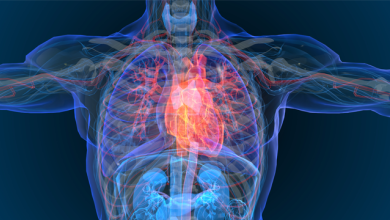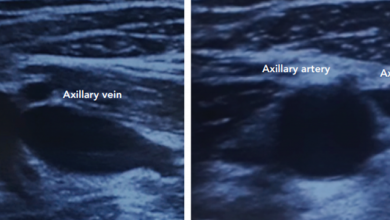Search results
Author(s):
Maarten Antonius Koole
,
Sanne de Jong
,
Barbara J Mulder
,
et al
Added:
1 week ago
Mahaim Revisited
Author(s):
Eduardo Back Sternick
,
Damián Sánchez-Quintana
,
Hein J Wellens
,
et al
Added:
1 year ago
Article
Author(s):
Cristina E Molina
,
Jordi Heijman
,
Dobromir Dobrev
Added:
3 years ago
Optimal cardiac function depends on appropriate rate and force of contraction, with specific cardiac regions having developed particular beat-to-beat properties depending on their individual functions. For example, isovolumetric contraction time is shorter in the right ventricle (RV) than in the left ventricle (LV). At the cellular level, cardiac function is regulated by regional cardiomyocyte…
View more
Author(s):
Richard Sutton
Added:
3 years ago
Syncope in a patient with a pacemaker commands urgent action to ascertain its cause and provide appropriate treatment. This is a well accepted statement but the field has evolved in recent years and, strangely, has received little attention.
Many considerations bear on this issue. First, syncope in pacemaker patients is not common but may be more so than generally considered. The lack of…
View more
Author(s):
Nabil El-Sherif
,
Gioia Turitto
,
Mohamed Boutjdir
Added:
3 years ago
Since its initial description by Jervell and Lange-Nielsen in 1957,1 congenital long QT syndrome (LQTS) has been the most investigated cardiac ion channelopathy. A prolonged QT interval on the surface ECG is a surrogate measure of prolonged ventricular action potential duration (APD).
Congenital as well as acquired alterations in certain cardiac ion channels can affect their currents in such a…
View more
Author(s):
Alessio Galli
,
Francesco Ambrosini
,
Federico Lombardi
Added:
3 years ago
Since the 1960s, Holter monitoring has been a cornerstone for diagnosing suspected arrhythmias in patients of all ages.1 The most common monitoring systems allow the continuous registration of three or more leads for 24–48 hours; newer Holter monitors allow continuous electrocardiogram (ECG) registration for 2 weeks.1 Extending the time of ECG registration will increase the diagnostic yield of…
View more
Author(s):
Rohil Bedi
,
Ali Ahmad
,
Piotr Horbal
,
et al
Added:
7 months ago
Author(s):
Henry Chubb
,
Mark O’Neill
,
Eric Rosenthal
Added:
3 years ago
Device therapy is increasingly employed in the management of complex congenital heart disease (CHD). Bradycardias, most often related to sinus nodal dysfunction (SND) or atrioventricular nodal (AVN) block, may necessitate the implantation of pacing devices, while malignant arrhythmias may be treated by appropriate use of implantable cardioverter defibrillators (ICDs). However, there is a complex…
View more
Author(s):
Ana Paula Tagliari
,
Adriano Nunes Kochi
,
Bernardo Mastella
,
et al
Added:
3 years ago
Cardiac implantable electronic devices (CIEDs), including permanent pacemakers (PPMs), ICD and CRT devices, are the mainstream therapy for many potentially lethal heart conditions, such as advanced atrioventricular block or sustained ventricular tachycardia or fibrillation. CIEDs can be implanted through endovascular or epicardial routes, with the former used the most because it is less invasive…
View more
Author(s):
Antonio Zaza
,
Carlotta Ronchi
,
Gabriella Malfatto
Added:
3 years ago
The incidence of ventricular arrhythmias is often related, within an individual, to the rate of their underlying sinus rhythm (heart rate). The direction of this relationship is generally considered to entail some prognostic significance: whereas ectopic activity suppressed by tachycardia is assumed to be benign, an arrhythmia enhanced by tachycardia is regarded with more concern. Is this…
View more














 « First
« First